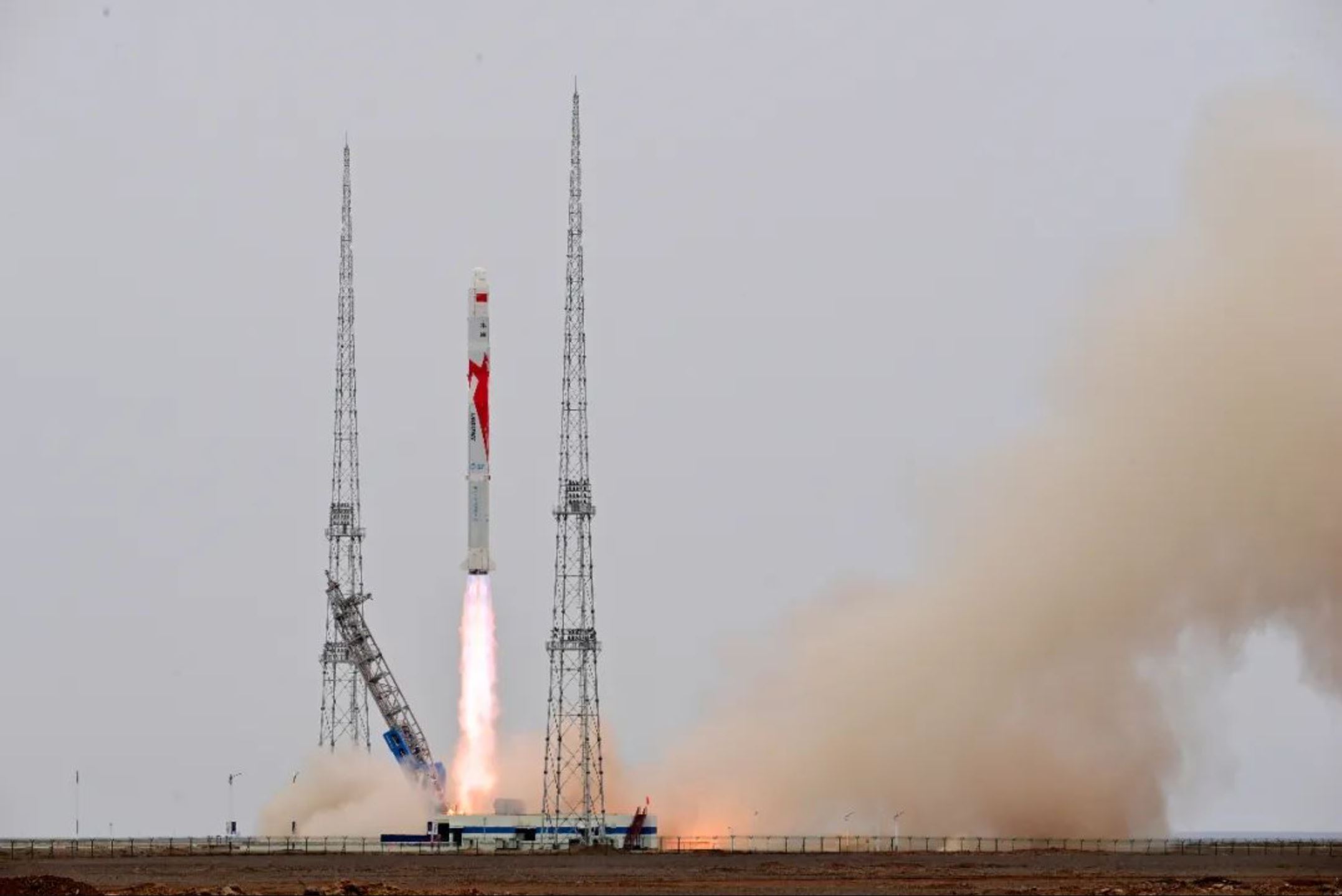Products You May Like
HELSINKI — Chinese private rocket firm Landspace achieved a global first late Tuesday by reaching orbit with a methane-fueled rocket.
The 49.5-meter-long Zhuque-2 lifted off from Jiuquan Satellite Launch Center in the Gobi Desert at 9:00 p.m. Eastern on July 11.
Landspace and Chinese state media announced that the second Zhuque-2 reached orbit, making it the first methane-fueled globally to reach orbit. This was later verified by U.S. Space Force space tracking data, showing an object in a 431 by 461-kilometer Sun-synchronous orbit with an inclination of 97.3 degrees.
The Zhuque-2 mission carried no payload and the rocket’s first stage was not recovered. An unconfirmed number of payloads were lost in the launcher’s first flight in December 2022.
Zhuque-2 beats a range of other methalox rockets, including SpaceX’s Starship, the ULA Vulcan, Blue Origin’s New Glenn, Rocket Lab’s Neutron and Terran R from Relativity Space, in reaching orbit. These other launch vehicles will be much larger and feature much greater payload capacity.
A methane-liquid oxygen propellant mix offers advantages in performance and reduces issues of soot formation and coking for purposes of reusability.
The successful launch also makes Landspace the second private Chinese launch firm to reach orbit with a liquid propellant rocket. This follows the success of Space Pioneer with its Tianlong-2 rocket in April this year.
📸Wow! Close-up look at Zhuque-2 Y2 launch. Nice shot of the methane CH4 flame. Credit: LandSpace, @byspto pic.twitter.com/rVBOMHXfn6
— CNSA Watcher (@CNSAWatcher) July 12, 2023
Taken together, the achievements indicate a breakthrough and growing level of maturity in Chinese commercial space launch efforts.
Landspace has already begun assembling its third Zhuque-2 (“Vermillion Bird-2”), indicating that another launch could come before the end of the year. Space Pioneer says it has multiple orders for launches for the Tianlong-2, and aims to launch the Falcon 9-class Tianlong-3 in the first half of 2024.
Landspace CEO Zhang Changwu told Chinese language Global Times tabloid that the company could now begin mass-producing the Zhuque-2, having finalized and verified its design.
Landspace’s Zhuque-2 is powered by gas generator engines producing 268 tons of thrust. Future Zhuque-2 launches with upgraded second stage engines will be capable of delivering a 6,000-kilogram payload capacity to a 200-kilometer low Earth orbit (LEO), or 4,000 kilograms to 500-kilometer sun-synchronous orbit (SSO), according to Landspace.
The rocket has a diameter of 3.35 meters—the same as a number of national Long March rockets—and a take-off mass of 219 tons.
The rocket is currently expendable but Landspace is working on a restartable version of the 80-ton-thrust TQ-12 engine which powers the Zhuque-2 first stage.
Landspace is one of China’s first commercial rocket firms. It was established in 2015, soon after the Chinese government opened up parts of the space sector to private capital in late 2014, which is seen to be a reaction to developments in the U.S.
It is also one of the best-funded Chinese launch firms, but the company’s journey to orbit has not been smooth. Its first launch, which took place in October 2018, used the smaller and simpler solid-propellant Zhuque-1. The mission ended in failure, and the company announced it would not repeat the attempt and instead focus on its methane-fueled Zhuque-2.
The company has however built up infrastructure during this time. Landspace has set up an intelligent manufacturing base in Huzhou, Zhejiang Province and established a $1.5 billion medium and large-scale liquid rocket assembly and test plant at Jiaxing, also in Zhejiang.
The company is now in a position to secure contracts for the Zhuque-2 but faces a field of competition. Other Chinese firms, including iSpace, Galactic Energy and Deep Blue Aerospace, are working on their own, reusable liquid propellant rockets.
Space Pioneer and other later movers such as OrienSpace are developing larger rockets which are targeting contracts to launch batches of satellites for China’s national satellite internet megaconstellation project, named Guowang.
China recently opened a call for space station commercial cargo proposals, further indicating that commercial firms will have a growing role to play in the country’s space sector.
The Zhuque-2 launch was China’s 27th orbital mission of 2023, with a total of more than 70 launches planned from state-owned main space contractor CASC and commercial players. Landspace, Space Pioneer, Galactic Energy, iSpace and Expace have so far complemented national launches this year.
